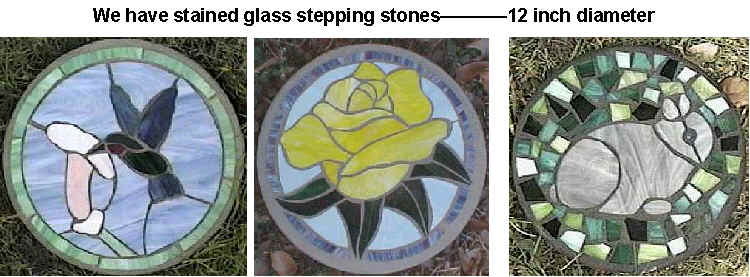| back to HOMEpage | back to main INDEX |
| VBF News Volume 1, Issue 3 |
 |
| back to HOMEpage | back to main INDEX |
| VBF News Volume 1, Issue 3 |
 |
|
click on page number to take you to article |
PAGE |
|
Do You Know Your Sign is Upside-down? |
|
|
VBF Show Schedule |
|
|
Did You Bring Any Feed Today? |
|
|
Rabbits Off Feed? |
|
|
Judging Hollands by Pat Vanecek |
|
|
What Do You Do For Flies? |
|
A Cage For My Rabbit |
|
|
Herbal Discussion |
|
|
VBF Pickle Recipe |
|
|
VBF Holland Lops 4 Sale |
|
|
Meet Corey Vanecek |
|
|
Jewelry & Stained Glass Stepping Stones |
WHAT WE DO ON OUR DAY OFF!
(Or how to clean rabbit cages the Vanecek way)
We clean our barns 4 times a year. One time is around the beginning of summer. Most of our rabbits have finished molting by then. Our barns are long and narrow. We have cages hanging on both sides. We have sloped cement floors. We push the manure out of the barns with a large squeegee after we sweep off the walkway.
When we clean a barn, we start by taking the rabbits out of the cages and putting them into carriers. Then we take down all the 3x5 coop cards and the plastic that covers them. Next we turn off the water system and disconnect the tubing between the cages. Then we make sure the cages are numbered. We mark a number on the feeder of each cage with a large magic marker. Now we’re ready to take the cages down & move them outside. Once outside we torch each cage and burn off the fur. Next step is to brush the fur and any calcium or lime deposits off the cages with a wire brush. We then wash the cage and water system off with a hose. Then we spray the cage with Spritz disinfectant. Finally we place them in the sun to dry.
While the cages are drying, I return to the inside of the barn and brush down the walls and ceiling with a broom. Sometimes it is necessary to torch inside too. Then I get out the hose and rinse off any residue.
Once everything has dried, we return the cages to the barn, reconnect the water system and finally put the rabbits back in their nice clean cages.
I can’t wait till my next day off! Pat

|
|
We would again like to thank
all the people who have contributed to our newsletter. If
you have an article or subject that you think would be of interest to
the rest of our customers, please submit it to Pat at bunnies@bunnyrabbit.com
for her consideration. |
 |
 DO
YOU KNOW YOUR SIGN IS UPSIDE-DOWN?
DO
YOU KNOW YOUR SIGN IS UPSIDE-DOWN?
This has become one of our
favorite questions. The first time it happened, we were at a show in Giddings.
We accidentally hung our sign upside down on the arena fence. Before we had the
opportunity to rectify the situation, a couple of our customers told us the sign
looked just fine the way it was. They seemed to think this display of our banner
pretty much-suggested Ken’s true personality. Ever since that day we have made
sure the VBF banner is in the crazy position. People now wonder if there is a
problem if we don’t hang the banner this way. Whenever we are sitting in a
chair and lean back to read the banner, it always looks correct to us. When new
exhibitors, who have never met us, see our sign and ask “the question”,
we have an opportunity to explain the situation. This is a great chance for us
to have a conversation. It usually gives them a smile with the ridiculous
explanation of the banner. We meet more new breeders and make new friends. We
try to keep a listing of upcoming shows and rabbit show information on our table
for anyone to pick up.
It is important to us that people see our banner and know that we are at the
show. We have been vendors at the Texas State Show for several years. We still
have people tell us at later shows that they didn’t see us at State. This is
always disappointing to us. Our job is to supply our customers, who have ordered
equipment, or new breeders with whatever is needed to help them display and
raise their rabbits. We usually set up our tables near a building exit for
convenience and so that we are not obstructing the show area or the exhibitors
displays.
Do we know our sign is upside down? Yes, we do.
Thanks for noticing, see you at the shows. VBF
|
HOW DO YOU CATCH A UNIQUE RABBIT? answer: UNIQUE UP ON IT. WHAT DO YOU CALL A ROW OF RABBITS
THAT TAKE A STEP BACKWARDS? HOW DO YOU CATCH A TAME RABBIT? answer: TAME WAY, UNIQUE UP ON IT. |
|
Vanecek Bunny
Farm Show Schedule |
| 9/16/00
Washington Co RS Tracy Lehman BRENHAM (409) 289-3416 |
9/30/00
Wichita Valley RBA Donnie Powers DECATUR (940) 644-5136 |
| 9/23/00
Southwest RBA Debbie Hill DOUBLE SHOW (817) 379-6223 dwarfh@flash.net Johnson Co RBA Bobbie Barker KILLEEN (817) 246-9434 |
10/7/00
SARBA Diana Rumfield DOUBLE SHOW (830) 217-4448 DigRum@aol.com Guadalupe Co Ida Mae Schulz SEGUIN (830) 379-4141 |
|
Vanecek Bunny Farm |
Everything's Always Hopping at the Bunny Farm! |
DID YOU BRING ANY FEED TODAY?
We use Petrus Show Formula-15% protein rabbit
pellets for our rabbits. There are several reasons why we prefer this feed. We
have tried many other brands but have had the best results for the last three
years with Petrus. There are some other good feed companies and high quality
feeds offered all over the United States. The Petrus Company has shown us how a
reputable business should be run.
First of all, the owner, Joel Petrus is always open to any suggestions, any
problems or any questions about his product. There are very few companies that
even know who is actually the owner of their business. Joel is a friendly,
generous person who has donated many hours, money and awards to Open and Youth
breeders. We have met several of his family members and his employees. They are
all working together as one big family to insure their products are of the
highest quality possible. Consistency and freshness of feeds are very important
to our animals. Joel strives to keep his feeds at the highest level by searching
the country for the finest grains and other ingredients for this feed mill.
The mill is located in Alexandria, Louisiana. It is about an eight-hour trip for
his driver to deliver to our farm. They deliver to several southern states but
in order for it to be worth his effort, he requires an order of at least eight
tons of feed for any trip. We split a load, of fresh feed, every month with
another breeder in south Texas. This again is a generous offering on Petrus’
part.
We can order any of his six different formulas of rabbit feed or any of the
other feeds or grains that he mills. We generally buy only Show Formula (15%
protein) and Breeder Formula (18% protein with calf manna added) for our use and
our customers. We use approximately one ton a month for our herd and offer the
rest to anyone who orders it or would like to try it for their rabbits. We order
50-pound bags but it does come in 25-pound bags.
Pat is not available to lift or move any heavy bags or objects. She has had
shoulder surgery and cannot strain her arms. Ken will help load feed for anyone
who wants to pick up feed. We do not deliver feed to any rabbit shows. We bring
enough feed for our rabbits to eat and for anyone who purchases some of Pat’s
rabbits.
We believe that whenever people buy a rabbit and plan on changing the brand of
feed used, they should blend the two feeds for about a week. Ask the breeder you
get your rabbit from about the feed they use on their bunnies.
Good luck, VBF
Petrus (800) 259-1801
| Date: 7/9/2000 From: Donelle Bomben dbomben@*** Subject: Piperazine Jackie, we raise Dwarfs and Hollands, and treat the kits when they are between 4 and 8 weeks. Most kits need just one treatment, but some will need a 2nd or third treatment about 2-3 weeks after the previous one. I use an eye dropper from the pharmacy. It took a bit of practice to judge where 2 and 4 drops were on the side of the dropper, but once I knew them I scored the plastic side so I'd know the next time. For the 16 oz Dwarfs we give 2-3 drops. For 2 lb Dwarfs we give 4-5 drops. I have always liked administering it directly into the mouth, as you really know they got it and how much. It is very bitter, but the rabbits don't seem to notice! Donelle |
|
|
|
 |
Vanecek Bunny Farm won 1999 Herdsman of the Year
|
Taken off Showbunny: Date: 4/9/2000 From: DEBRA L HOLDREN
Subject: rabbits off feed
There are several reason's a rabbit will go off feed. You need to watch and try to find out the reason, and get rid of the problem. I'm sure I won't be able to list them all, but I will list some of them.
1. LACK OF FRESH WATER a rabbit will NOT eat if it does not have a supply of water! Check and make sure your rabbit has a clean supply, and that the nipple's aren't clogged on water systems!
2. STALE FEED a rabbit is picky about their food. If it is old, or contaminated, they will refuse to eat it. Also, if you have changed their diet, they might resist the change.
3. TOO MANY TREATS if a Rabbit is given too many treats, they will not eat their regular food. To find out if this is the problem, you take them all away and see if they start eating again in 3 days or so.
4. BAD TEETH a rabbit cannot eat if they cannot get a hold of the food and get it in! If the rabbit has overgrown teeth, just use a pair of needle nose wire cutters and carefully trim them, or take them to a vet to do this.
5. HAIRBALLS a rabbit will not eat if they have hairballs. Treat with either an over the counter remedy, or with Adolph's Meat Tenderizer(1/2 teaspoon) mixed with a favorite treat(I use pumpkin), or use any other "good" home remedy, until you notice them pass the mass with the furball in it.
6. ILLNESS if you rabbit is sick, they will sometimes go off their feed. I would rule out the other 5 first, then take the rabbit to a vet to find out what is going on.
Remember that a rabbit cannot feed or water themselves! They need you, their caretaker, to provide for them and their needs. It is up to you, the breeder/owner, to make sure they are getting the right food in the proper amounts. That is one reason I personally believe in the measuring out feed method. If you just top of the dishes every day, you have no way of knowing how much food each rabbit actually ate. Even my silver fox, which are on full feed, are given it in a measure, so that I will know if one is not eating as they should be.
Good luck with the chocolate bunny that is not eating! Deb of English Spot
Haven/Silver Fox Run

The Way I Want Holland's Judged
by Pat VanecekStep 1: Take the rabbit gently out of the coop. Lift the rabbit from underneath and do not drag it pulling toenails as you go or pull it out by the ears.
Step 2: Check for disqualifications. Turn the rabbit over. Check the teeth, toenails, sex and for navel abscesses. At this time you can view the feet, legs and bone on the rabbit (10 points). Remember: short, thick, straight, and heavily boned. Gently hold the rabbit up and check for eye spots. Set the rabbit back on the table and check for ear mites.
Step 3: Pose the rabbit. Lift the hindquarter and set it back on the table, making sure the tail is exposed. Put one hand under the chin and lift the front of the rabbit while keeping one hand on the back of the rabbit and sliding it down to the bottom of the rump. Make sure the rear feet are sitting straight under the body. While keeping a hand on the chin, run your hand over the body to judge the width of shoulder, loin and hindquarter (body: 32 points). You are looking for Short & Massive. Release the rabbit. If it doesn’t stay in the set position, gently repose. If the rabbit will not pose up here, take a look at the head, ears and crown now. Let the animal relax and then try to pose them up again. Gentle and slow are the key words.
Step 5: View the rabbit. Remember head is 24 points. The Holland Lop head should be round from all views and proportionate to the body. The head should be massive in appearance and be set high on the shoulder. It should also have good width between the eyes and throughout. Next, look at the crown (8 points). This defines how the ears hang. If the crown is wide from front to back and side to side the ears will lay open and down. Also, judge placement of the crown. The crown should be set high on the head
so the ears fall just behind the eyes. At the same time you will be judging the ears (10 points). The ears should be thick, well furred and only extend just past the jaw line. (I won’t get into my opinion here, which is that more points should be put on the crown then the ears since the standard describes so much of the crown purpose in the ears. Lets just say Crown and Ears is 18 points.) Making the total points for head, ear and crown 42 points vs body 32 points. Remember to step back and view the animal in a relaxed state.
Step 6: Run your hand over the body and roll back the fur. The fur (7 points) should be short (aprx 1 inch), glossy and dense. You can check the color and markings (4 points) at this time.
Step 7: Last but not least—condition (5 points). My humble interpretation of the ARBA standard for condition is that the animal looks healthy and feels firm.
Now if I can just get the judges to read this! Pat
|
|
The old reliable fly swatter is probably one of the most popular methods of eliminating these pesky insects. We’ve even seen clever little guns that propel a web-type disk at flies to squash them on ceilings or hard to reach places. There will never be a time when all flies will be eliminated from our planet. Thankfully there are many intelligent chemists and scientists that find some relief from flies and all the problems they can cause.
Flies are strong, fast, hardy little insects that can multiply quickly in many types of decaying matter. Anything from rotting leaves to rabbit manure is a wonderful nursery for fly larvae. Keeping the adults from laying eggs in these areas will help keep the population at a minimum. Many people use worms in their compost heaps to help control the hatching of unwanted eggs. Using chemicals such as lime or sulphur can also deter flies from laying their eggs. Common household items, such as soap, can control some problem areas. Eliminating all places that would be potential fly hatcheries is an important first step.
We have introduced parasitic wasps into our barn areas with the theory that these little fly eaters would destroy the eggs and larvae before they become flies. We have heard several people say how effective this method is for their situation. (It didn’t work well for us however.)
Chemicals such as Marlate and Golden Marlin, used by many people with horses, seem to keep many flies out of the barn areas. It is nearly odorless but should not be near any rabbits or other animals.
Fly strips (sticky strings, made with some kind of fly bait added) can catch a lot of flies. They are ugly and a little messy whenever collection time arrives. The tapes are usually covered with flies that are stuck to the paper. Flytraps look similar to many small insect or minnow traps. There is a central place to keep the bait and a funnel shaped area leading to the bait. Small wire or netting is used to keep the bugs from escaping. They can collect hundreds of flies in a short time. You still have to kill or destroy the live flies in the trap. There are several methods of disposal.
Using a battery or electronic dispenser is one of the newest and most effective methods for positive fly control. The machines cost about $33 per unit. You install a spray canister of fly spray, which lasts about 30 days and cost $7.50. The pyrethrums they use to keep flies out of barn areas do not harm any animals or plants.
Flies can carry many diseases and problems for ranchers and farmers. Keeping their population at a minimum and insuring your animals are safe is a challenge for all of us. We have tried the methods mentioned in this letter and will try to help anyone with their fly problems. VBF
I NEED A CAGE FOR MY RABBIT!
 This statement is loaded with a thousand
questions. Where do I start?
This statement is loaded with a thousand
questions. Where do I start?
1. What breed of rabbit do you have?
2. Is it a buck or a doe?
3. Which type of wire do you want to use?
4. Is the cage for indoors or outdoors?
5. Do you want a kit or already assembled?
The answer we usually receive with these basic questions is, “ I really don’t
know.” We try to offer our customers every possible option available so your
rabbit will have the ideal cage. We are continually adding new and improved
items to our price list. As most veteran breeders know, using the correct size
and best materials is very important for a successful Rabbitry. We know some
people just want a simple cage to keep their rabbit safe. All types of rabbits,
pets, show & commercial rabbits are a concern of our business, so we try to
keep all kinds of building materials and tools available for purchase.
The breed, size of the rabbit and location of the cage determine cage sizes.
Rabbit weights can range from 2 to 25 pounds. Cage sizes generally run from 18”x18”
to 30”x36”.
Bucks can live fine in a cage with 1”x2” wire sides. Does, which may be used
for breeding, would be better off in a cage with babysaver wire on the sides.
Saving one baby makes this cage worth the cost.
We have galvanized-before and galvanized-after (or double dipped) wire
available. We also have PVC coated wire.
We can make cages that use pans. The pans can slide under or the cage sets down
into the pan.
We have cages with a roof and legs for outdoors.
Any of the cages can be constructed from any type material offered.
We have many sizes of kits available. We have many sizes of plastic pans
available. We will build any size or kind of cage to suit you and your rabbit’s
needs.
Building your own cages takes a few special tools to help simplify the task. We
offer two brands of hand flush wire cutters plus electric shears. We have two
types of fasteners--J-clips and C-rings. We have a tool that removes the j-clips
or c-rings. We offer heavy duty, lightweight and stainless steel j-clips. We
offer galvanized or stainless steel c-rings. We use the stainless steel c-rings
on the cages in our barns. We also use and prefer the double galvanized wire
with babysaver for our cages. We have realized that if the cages take less of
our time and concern, then we can devote more time to our business and bunnies.
Good luck, Ken Vanecek
DID YOU BRING ANY WIRE WITH YOU TODAY?
We are happy and willing to deliver any size wire
you may need to a show. We have limited space and weight capacity in our van. We
try to bring a variety of items that we feel everyone may need. Larger, heavier
items are only loaded in the van if they were ordered and requested delivery to
the show. We have 19 different types and sizes of wire on our price list. We
offer FREE delivery to shows to help save our customers the shipping costs.
We generally set up and are ready to sell our items about 7 a.m. on the show
dates. Because we usually have a long trip home, we try to start packing the van
at 2 p.m. We will hold any item ordered until 2 p.m. on that day. Whenever
someone does not show up to get their order, we will try to sell it to someone
else who wants it. We do know a lot of you but new people are difficult to find.
We cannot leave our table area looking for the customers who have ordered
something. We bring special items to shows as a service to our customers.
Please, if you ask to have something delivered, pick it up before 2 p.m. the day
of the
show.
Thanks, VBF

|
HERBAL DISCUSSION |
|
| Taken off the Web |
| Date: Thu, 6 Apr 2000 From: "Deb Goldben" Westwind@tbcnet.com Subject:: Wry neck We have had very good success with the following natural remedy. Get some garlic oil (we get ours at the health food store as we use it for ear infections). Fill a dropper bottle (1 oz size) about half full of the garlic oil and then at about 5 drops of VetRx. Put 2 drops of this mixture in each ear 2 times a day (shake well before using and warm a little bit -- not HOT). Massage the down into the ear canal. Continue for 2-3 weeks after head returns to normal The essential oils in VetRx are the same as those used for ear infections and will be absorbed by the ear tissue and go to the location of the infection. We also put echinacea/goldenseal drops in the water of the rabbit during treatment as this boosts the immune system. We have never treated a rabbit allopathically (ie with Baytril, antibiotics, etc) for anything. Several friends have used the above remedy for wryneck and all have had a 100% recovery. It's my understanding that wry neck, itself, isn't contagious. It is listed in the ARBA Guidebook as a non-infectious condition. Deb Goldben www.WestwindGraphics.homestead.com
|
Date: Wed, 3 May 2000 From: joe frecls@aol.com Subject: Fungus Infection Could your fungus infection be ringworm? If so try rubbing alcohol applied with a q-tip three times a day. Garlic rubbed on ringworm also works well. More on WRY NECK Dr. Wendy Feaga wrote an article in Nov-Dec DR. I quote the treatment she gives: "Currently, I am using injectable prednisolone at a dose of five mg per pound which is repeated 48 hours later. This drug was chosen because of its rapid clearance from the body, and therefore minimal long term depression of the immune system. I do not know if lower doses would be as effective. Cortisone also has the valuable side effect of increased appetite, which is helpful in affected rabbits which may be reluctant to eat. "In conclusion, wry neck appears to be due to inflammation of the brain in 90% of the cases examined. Encephalitozoon Cuniculi (E Cuniculi) appears to be responsible for a majority of these cases, if not nearly all of them. However, by the time wry neck occurs, the parasite has been cleared by the rabbit's immune system. Since the organism is gone by the time symptoms are seen, there is no justification for antibiotics in the treatment of wry neck." |
| Date: Mon, 08 May 2000 From: "Deborah
McNeil" <dynasty@paradise.net.nz> Subject: Lemon Mint and Lemon Balm Lemon Mint - member of mint family while Lemon Balm/Balm/Bee Balm is Melissa officinalis. Different family and different herbal properties. LEMON MINT has mint properties: used for colds, eye inflammations, liver stimulant and to relax the muscles of the digestive system. Can stimulate the bile flow so useful for indigestion, colic etc. Do not give to young babies and do not use constantly as can irritate mucous membranes so feed for short time only and small amounts. Do not use when flowering. Can be used to dry up the milk of does during weaning or with mastitis. LEMON BALM: good for nervousness and when rabbit is of a nervous disposition - for calming. Helps prepare rabbits for traveling if fed a few days before. Good to give to does before mating - good for uterine disorders and help prevent miscarriage. Good for cleaning out retained afterbirth and for milk production. Safe to feed several handfuls at a time. This is from the list I have just updated for a rabbit club seminar. Regards Deborah |
|
Date: Mon, 08 May 2000 From: "Deborah McNeil"
<dynasty@paradise.net.nz> Dear Suzi, Sorry I took so long to reply - have been
offline for while. This Love Bug virus had me worried. I know of Pam Alley
from other lists - she is very good. I have just done a seminar on rabbit
medical and food herbs so have a list to follow now - so here goes --- Now
regarding the below: |
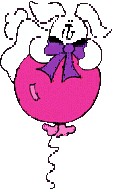 Date:
Sat, 10 Jun 2000 From: mamaofnine@juno.com Date:
Sat, 10 Jun 2000 From: mamaofnine@juno.comSubject: Babies with enterotoxemia! Christine, I use homeopathic *e-coli* and *salmonella* if I even so
much as suspect the possibility of a bacterial outbreak. We give these
remedies preventively to our new born goat kids, and have used them w/
rabbits as well. Using homeopathic remedies is easier than using herbs
when the animal in question is still a suckling, as one dose is just one
or 2 drops of the remedy. |
| I'M IN A PICKLE | 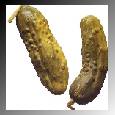 |
(20 to 30 depending on their size)I’M IN A PICKLE
I can remember eating pickles right out of a large barrel my Grandma used to keep in her kitchen. It was summertime and I was out of school. I learned how to feed many kinds of farm animals, collected chicken eggs and picked vegetables out of her garden. The cucumber plants were always huge and covered with what I used to call baby pickles.
Once I took a bite of one of these little cucumbers, but it tasted nothing like the ones I took out of the barrel. I asked Grandma why there was such a difference in taste. She explained to me about the process of changing cucumbers into pickles. This is done by adding a few ingredients to the cucumbers and some water. She grew dill weed and garlic. We bought salt and vinegar at the General Store.
Grandma said that the recipe for these pickles was brought over by her Mom from the old country (Czechoslovakia). I never did write down any direction but I have experimented for a few years with my garden cucumbers.
Here’s the recipe for Vanecek Bunny Farm Pickles.
Glass gallon jar full of clean washed cucumbers
The mustard seed and peppers are my own addition and are not necessary. Mix all the ingredients and add water to the jar until the pickles are covered and it is full. Cover and put the jar into a refrigerator for about 7 to 10 days.
The pickles should be cool and crisp, a perfect treat for a hot summer afternoon. I think you use more calories eating a pickle than the amount of calories a pickle may contain. The salt may be a problem for some, so you can cut back on that ingredient.
If you stop by the house someday and ask for a bite, I just might give you
one. If you would like a bite of pickle, let me know. KV

 HOLLAND
LOPS FOR SALE
HOLLAND
LOPS FOR SALEI raise Holland Lops in blue tort, tort, black,
blue, siamese sable, sable point, smoke pearl, fawn, lynx, these colors in
broken, and blue eyed whites.
If you are interested in purchasing a rabbit just let me know what color and sex
you are want. Then I can let you know what is available.
Below is a list of some that are currently available. Prices range from $50 to
$150.
date born sex color
3-27-00 B blue eyed white
5-31-00 B blue eyed white
6-19-00 B&D blue eyed white
6-28-00 litter of 6 blue eyed white
3-24-00 D black
4-30-00 D broken black
4-6-00 D broken fawn
2-22-99 B broken tort
5-10-00 B broken tort
3-24-00 D broken tort
2-21-00 D tort
5-10-00 D tort
5-3-00 D blue tort
6-15-00 B&D smoke pearl
6-15-00 B siamese sable
Email:bunnies@bunnyrabbit.com
 HI, I’M
COREY J
HI, I’M
COREY J
I am the red & white Australian Shepard who protects Vanecek Bunny Farm from dangerous animals. My people have given me the duty of patrolling the VBF barns and property whenever they are gone or asleep. They try to keep their gate closed and the alarm on during those times, but occasionally a rogue dog or wild animal will stray onto our property threatening the rabbits. My job is to insure that nothing is allowed to stay around that could bother the barns.
I am not allowed to travel with my people to any of the rabbit shows they attend. They tell me that dogs and other animals can cause some show rabbits a lot of stress and may even cause death. I would not like to see any of our rabbits or any other show rabbits under any duress because of the fear caused by a strange animal. I am a good dog and would not intentionally want to scare any show animals. My people have said that some rabbits can sense the presence of predators. This fear is a natural, inbred trait that smaller animals possess.
I have also heard my people speak of some of the many diseases and parasites other animals may pass off to show rabbits. Birds, cats, dogs and other farm or wild animals can carry dangerous problems for rabbits. My people try to isolate their valuable show and breeding stock from any dangerous situations.
My people do not allow humans to smoke in or near any of our barns. I know how terrible smoke makes me feel. Most animals fear the sight or smell of any burning material. Our only defense is to run. But when caged, what would you do?
My hope is that all National, State and Local Rabbit Clubs establish and enforce rules. Rules that would keep foreign animals out and dangerous substances away form rabbit shows. I am sure my people and their bunnies would appreciate this simple rule.
I would like to hear that all rabbits taken to shows are kept safe and comfortable.
VBF Guard Dog, Corey
|
offer good thru 9-30-00 |
|
1 compartment carrier
reg $1610”x16” with 3” deep Polytray
sale price
$12.00|
We now have the largest selection of Rabbit jewelry in the US. We offer costume jewelry, sterling silver and 14K gold. Below are a few examples. If you would like a complete jewelry price list, just let us know. |
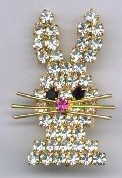 Austrian
Crystal Bunny Head $20
Austrian
Crystal Bunny Head $20
Pewter Bunny w/Watercan $12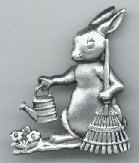
 Sterling
Silver Kissing Bunnies Charm $5
Sterling
Silver Kissing Bunnies Charm $5
Sterling Silver Laughing Bunny Charm $5
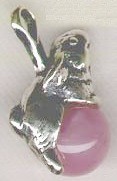
Sterling Silver w/rose quartz
bunny pendant $23

14K solid gold
kissing bunnies $23
